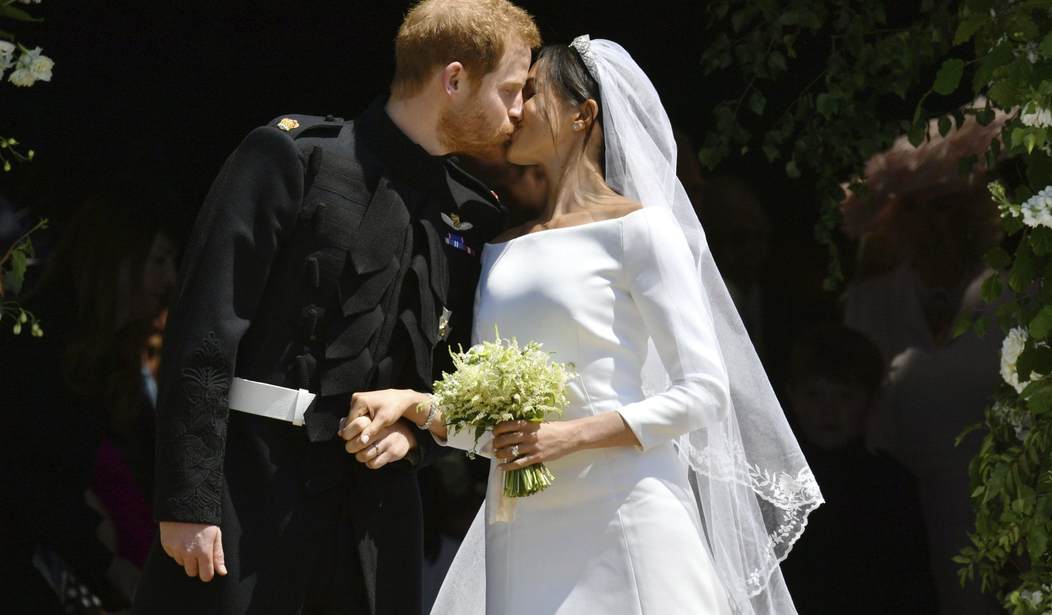Media outlets around the world are buzzing about the marriage of England’s Prince Harry and American actress Meghan Markle. I admit that I woke up early Saturday morning to watch the nuptials and the uniquely British pageantry. I’ve had a fascination with such things since the ill-fated wedding of Lady Diana Spencer and Prince Charles in 1980. I, along with millions of other Americans, watched in the pre-dawn hours of that July day to catch the first glimpse of Diana’s dress. I was captivated by Diana’s beauty and the mystique of the royal family. And, of course, like many girls through the ages, I indulged in frequent princess fantasies.
On first glance, today’s royal wedding at St. George’s Chapel at Windsor Castle was a grand and yet charming event. The bride and groom were all smiles, clearly deeply in love, and Markle’s dress was elegant and appropriate (though it barely skirted the church’s rules about bare shoulders). The celebration was intimate, with only 600 guests, and included many personal touches that, while shunning royal tradition, seemed meaningful to the bride and groom. Hollywood celebs were in—and heads of state were out on this day.
But the courtship and wedding of Meghan and Harry, who is sixth in line for the throne, signaled a sea-change for the royal family in many ways. The bride is American, divorced, biracial, and a commoner, all of which would have been considered scandalous just a generation ago.
The ceremony itself featured an African-Amercian bishop who cited the American civil rights movement and quoted Martin Luther King Jr. as often as he did Jesus. The couple opted for a secular song, “Stand by Me,” performed by a predominantly black gospel choir—jaws literally dropped—in addition to old-school Christian hymns sung by the congregation. The traditional Anglican vows were altered slightly to allow the outspoken feminist Markle to opt out of the traditional promise to obey her husband.
While the acceptance of people of color into the royal fold is a welcome and long-overdue change, the acceptance of divorce and immorality by the Church of England is another thing altogether. That the Church blessed the union at all, coming as it did after the couple had been openly cohabitating and in light of Markle’s divorce, signals a radical departure from the traditions of the church headed by Queen Elizabeth, who inherited the title “Defender of the Faith” on the day of her coronation. That designation was first granted to King Henry the VIII by Leo X in 1521. Henry VIII, you will recall, famously left the Catholic church after the Pope refused to annul his first marriage to Catherine of Aragon. He later appointed himself Supreme Head of the Church of England and went on to wed five more women.
The queen vowed at her coronation in 1953 to do everything within her power to “maintain in the United Kingdom the Protestant Reformed Religion established by law,” promising to “maintain and preserve inviolably the settlement of the Church of England, and the doctrine, worship, discipline, and government thereof, as by law established in England.”
Sadly, Queen Elizabeth II has largely failed to live up to that high calling both in her own family and in the nation she took an oath to lead in the faith.
While the queen is said to be a very religious woman, her children and grandchildren don’t appear to share her faith. The marriages of the children of the queen and Prince Philip have been replete with scandals and divorces — the most infamous being Prince Charles’s divorce from Princess Diana. Her children and grandchildren, not to mention her husband, openly defied church teachings with pre-marital and extramarital affairs and cohabitation before marriage. Both Prince William and Prince Harry shacked up with their future spouses before marriage, something that would have been unthinkable 20 years ago.
When the divorced Charles wed longtime paramour Camilla—herself a divorcee—in 2005, the couple opted for a civil ceremony to avoid an awkward situation that would have put the Church of England in the position of blessing the union of two divorcees, one of whom was the future head of the Church. The queen refused to attend the civil ceremony but was present at the Service of Prayer and Dedication after they took their vows and held a reception for the couple in Windsor Castle afterward. Prince Charles later indicated in 2008 that he wishes to be recognized as the defender of all religious faiths rather than only the Anglican Church when he ascends the throne, a move that, if it comes to fruition, would require Parliament to amend the 1953 Royal Titles Act.
Albert Mohler, president of Southen Baptist Theological Seminary, discussed in a recent podcast the move to the left by the Anglican Communion, noting that while Bishops of the Church of England are “charged with the responsibility to defend the sheep, to defend the church, and to defend the faith,” there has been a “massive transformation of the Church of England.” There’s been a shift, he said, from “a faithful church that would witness to the culture” to one where the “enemies of the faith inside the church” are “far more dangerous than the enemies outside.” Mohler cited as evidence the Church of England’s capitulation to the culture on sexual morality.
Indeed, according to a 2017 British Social Attitudes survey, more than half the population claims they have no religion and only three percent of adults under the age of 24 describe themselves as Anglican. Amongst those ages 18 to 24, three out of four say they have no religion. Among all adults in Britain, only 15 percent now identify as Anglican, 17 percent as Catholics or “other Christian,” and 6 percent say they belong to a non-Christian religion.
The Church of England’s decline in numbers closely follows the sad trajectory of other mainline Protestant churches. As is almost always the case, declines usually begin with the decision to compromise on longstanding church doctrines. The Church of England began ordaining women in 1994, and ten years later the first female bishops were ordained. Not long after, the church began unofficially blessing same-sex couples. And while the Church of England doesn’t yet officially allow for same-sex marriage, the stage has already been set for approval with the acceptance of clergy in same-sex civil partnerships.
What a long way the Church has come from 1936 when King Edward VIII abdicated his throne so he could wed American divorcee Wallis Simpson. Just six decades later, in 1995, Charles and Diana divorced with the queen’s blessing and the support of the Archbishop of Canterbury. And now we have the marriage of sixth-in-line-to-the-throne Prince Harry to a divorcee with the Church’s blessing.
While Queen Elizabeth II is not singularly to blame for the decline of Christianity in Britain, there is no doubt that she’s aided and abetted—and even approved of—the liberalization of the Church of England during her reign, leading to widespread secularization in England and the growing threat of Islamization in the island nation.
Follow Paula on Twitter @pbolyard
An earlier version of this article incorrectly stated that Markle was Catholic.










Join the conversation as a VIP Member